Team: community manager (Sarah Taylor), product manager (Taylor Valore), me, 3 designers (Charlotte, Kiyo, Magdalena)
Role: user research, strategy design, ux design
Time: 5 weeks (2023.11-2023.12)
Tool: Figma, Figjam, dovetail, zoom, pen & paper
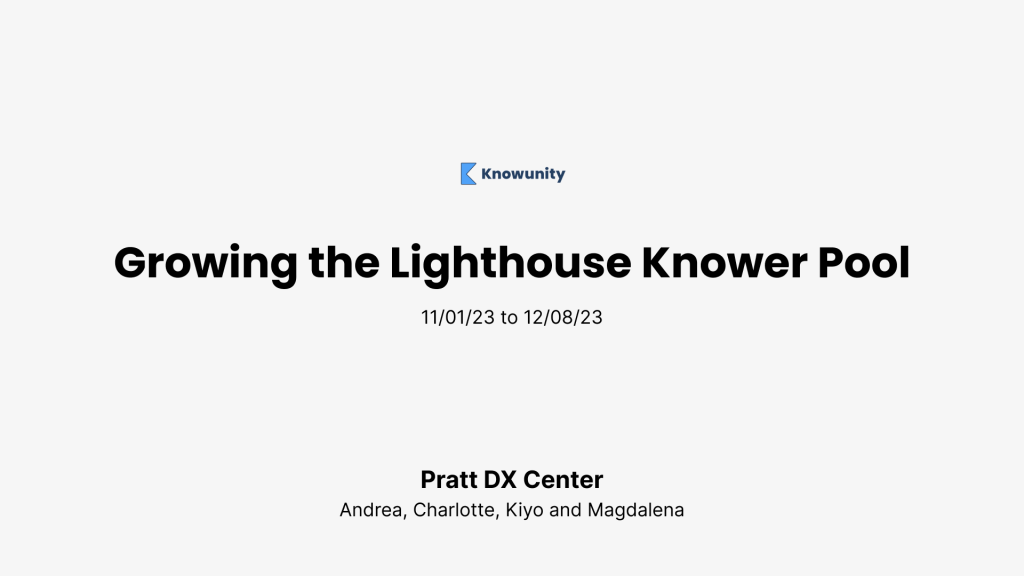
*OVERVIEW
(about Knowunity)
Knowunity is Europe’s fastest-growing EdTech app with 9 million users across Europe (and now also the US). Our dynamic learning platform allows students to share their notes, summaries, flashcards, and quizzes to provide a true peer-to-peer perspective on school-related content, seamlessly integrating social learning with user-generated content.
(project context)
Currently, the team is exploring a hypothesis: enhancing engagement and growth of top content creators (known as Lighthouse Knowers) will drive up retention and engagement among regular users.
(problem trying to solve)
How might we propose innovative features & strategies and fix usability problems to expand the lighthouse knower base?
(estimated impact)
Project goal: After implementing most recommendations, we expect to see a boost in the number of power users, reaching 100 (from 7) in the next 6 months (June 2024).
Product metrics:
~increased user retention rate ( of power users)
~increased use engagement rate ( between regular users, and between regular users & content creators
~increased net-promotor score ( of the know unity app, of all users)
~increased innovation adoption rate ( for new purposed features)
~decreased churn rate ( of all users, but especially regular users)
~increased user satisfaction ( of all users)
*RESEARCH
(business context)
Before you scroll, learn where we were coming from
1. Who were we interested in:
Highly engaged content creators, who post high-quality study content on the platform.
2. What was our goal:
Convert more highly-engaged content creators into “ subject experts’ or influencers”, elevating retention in regular users
3. *Plausible* assumption we held behind this goal:
“Don’t we (all) want recognition and validation for our good work?”
We believe that highly engaged content creators could be more motivated to post if they receive tons of feedback and have more followers.
“If we create more influencers, people would bring more popularity and bring people from their circles”
We believed that since our users are grade school kids in school, they could easily influence one another.
(user research)
Addressing three questions with research:
1.What are their motivations for posting content?
2.What prevented them from growing?
3.How can we help them to reach the metrics of a lighthouse knower?
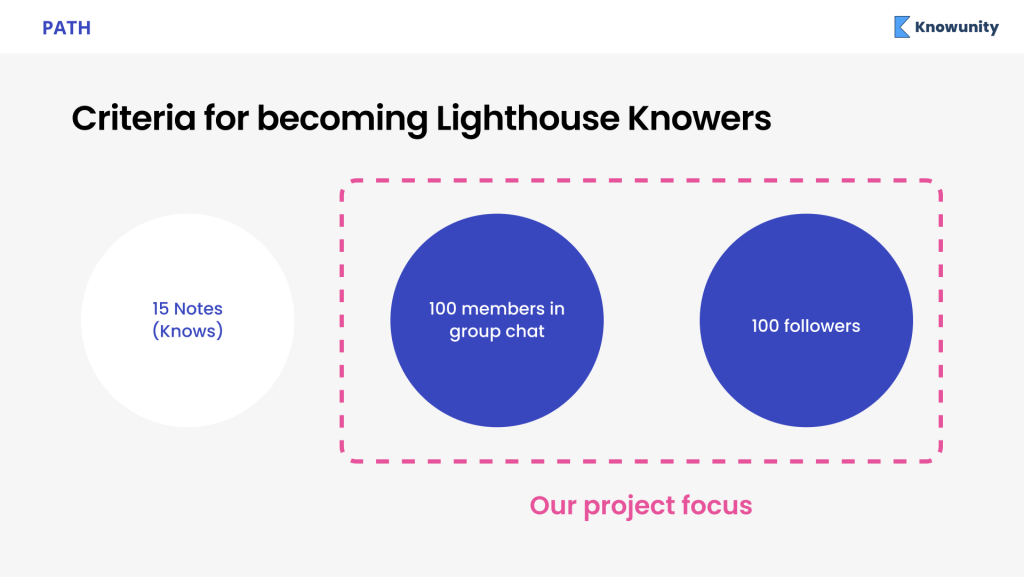
Understand the full picture of insights with two personas
(user recruitment)
Active content creators: we wanted to understand their motivations to post content & engage with users
Regular users: we wanted to learn what would make them follow someone & what do they look for on Knowunity platform
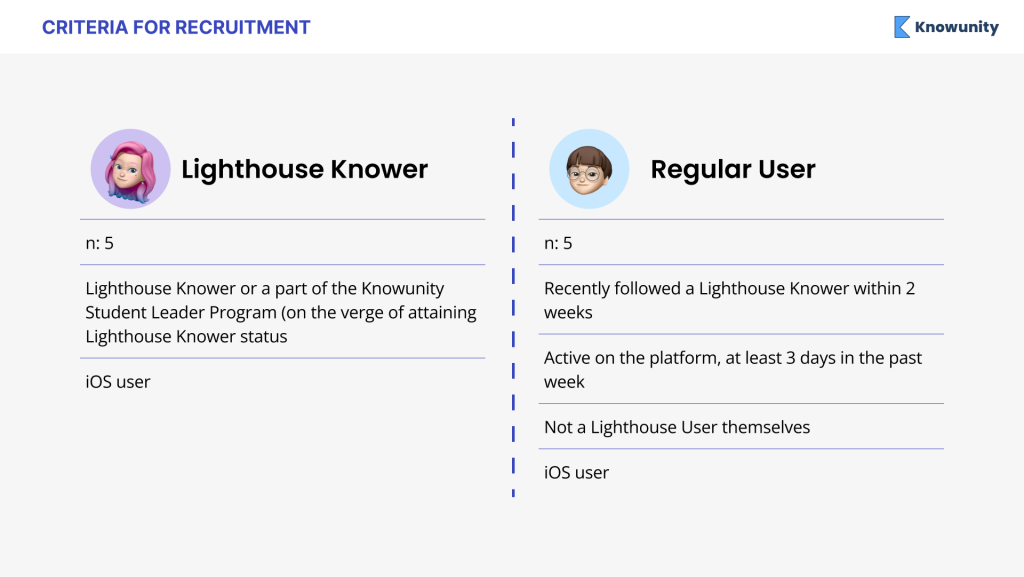
(research methods)
Semi-structured interview + Usability testing
User interview (10): We chose user interviews to uncover motivations and thought processes,
Semi-moderated usability test(10): We chose usability tests to see how they are currently using the app and understand common pain points.
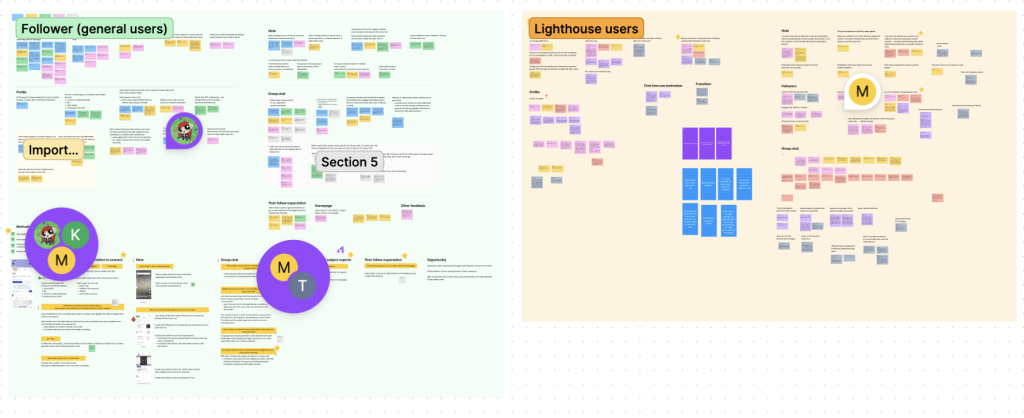
*RESEARCH INSIGHTS
Finding #1
They value the community’s sense of Knowunity. They love to see the effect of helping others.
Finding #2
They think notes are where they get the most traction. Good notes bring more feedback.
But wait, we discovered more than that…..
(Strategy pivot???)
“WE GOT IT ALL WRONG”
Finding #3
Lighthouse Knowers do not want to be “ influencers” ( our initial goal of creating an influencer/leader)
“We’re here to share notes and get information, not to be famous on an app.”
Lighthouse Knowers do not see the point of gaining followers and do not intend to do so ( our goal of helping them gain followers – , the hardest metric to meet so far)
“I’ve been trying to make more actual friends. rather than how normal social media ( following) is an illusion of friends type thing.”
(maybe we need to talk to our stakeholders??)
“ This is huge. BUT… Is it even POSSIBLE to change the follower metric? “
*OUTCOME & RECOMMENDATION
If you are interested in our full deck and recommendations, you can find it here.
(problem # 1)
Lack of reasons and benefits to follow
100% of Lighthouse Knowers don’t know how to increase the visibility of their notes, but they don’t actively aim to promote it.
60% of Regular users don’t find an intuitive way to discover notes from lighthouse knowers before and after following them.
(Design solution # 1)
Create a reason for regular users to follow someone
Add a “following & explores” filter on the feed
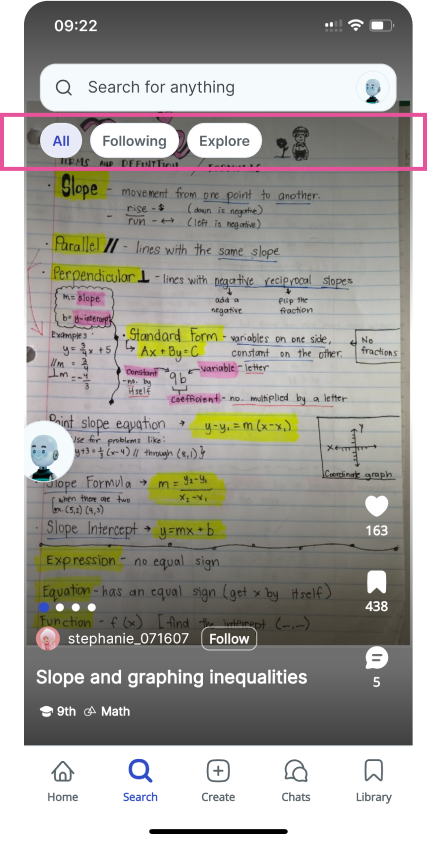
(problem # 2)
Weak connection between subjects and subject-specific creators
In-app engagement is tied to specific subjects, yet there is little visibility of subject expertise in the knower’s profile. For example, 100% of users follow creators for subjects specific content and want to see their subject specialty on their profiles. Also, 100% of Lighthouse Knowers have categorized content into folders based on subjects they have expertise or interest in.
Increase the visibility of subject leaders
(Design solution # 2.1)
Create a “subject leader” badge for knowers.
Make it easier for content creators to express their expertise.
Make it easier for regular users to identify “pro” accounts

(Design solution # 2.2)
Make “asking questions” to favorite creators easy and seamless
Currently, 80% of Lighthouse Knowers make content specific to their user’s needs. 50% of Lighthouse Knowers take requests from the group chat or DMs.
“Some people will be like, hey, can you write me a note about blah blah, and then I’ll ask them, would you rather I handwrite it or type it up and I’ll do it like however they prefer”
“I noticed that some of my followers are in my group, but they’re very quiet and shy. I don’t really know that they’re there until they reach out to me. ”

(problem # 3 )
Two user groups have different motivations for using group chats
Lighthouse Knowers predominantly participate in group chats to build connections, whereas regular users are more focused on getting answers to their specific questions,
Redesign group chat-related features to serve both users
(Design solution # 3.1)
In profiles, add a link to the creator’s group chat
100% Lighthouse Knowers value authentic connections and interactivity of group chats, therefore prioritizing group chat interactions.
100% will welcome new members to their group chats.
In the profile folder, add a link to the group chat under the same subject
Limited promotion method: 100% of Lighthouse Knowers currently promote groups through relevant groups or ambassador groups, yet 60% feel like they are spamming.
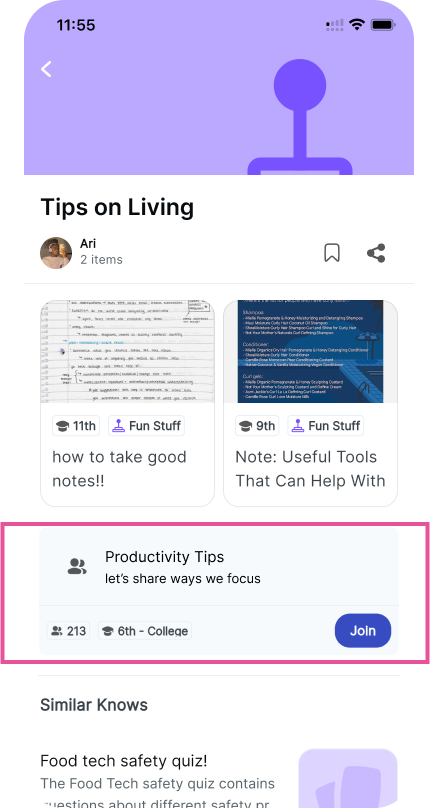
(Design solution # 3.2)
Make the reaction feature of group chat Q&A discoverable
100% Regular users use group chats for viewing and answering questions: quality of the Q&A impacts their willingness to join the group
100% of Lighthouse Knowers feel motivated when seeing feedback of their effort. They also passionately reply to questions in their group chats.

*HOW DID WE DO
Sarah (Community manager, project owner) said:
“ I very much enjoyed the project presentation. I love the approach you took, going from both ends – I think that got some really interesting insights.”
” I’m so obsessed with the forum idea, and also intrigued by the idea of a dedicated posting place. ”
Taylor Valore ( Product Manager, Project Owner) said:
Really, really nice presentation. There was a parallel chat happening where we were all talking about how we were going to use all of the recommendations. Everyone was really impressed 🙂
Katie said:
“The recommendations are well thought out and well organized. Really good job on that!”
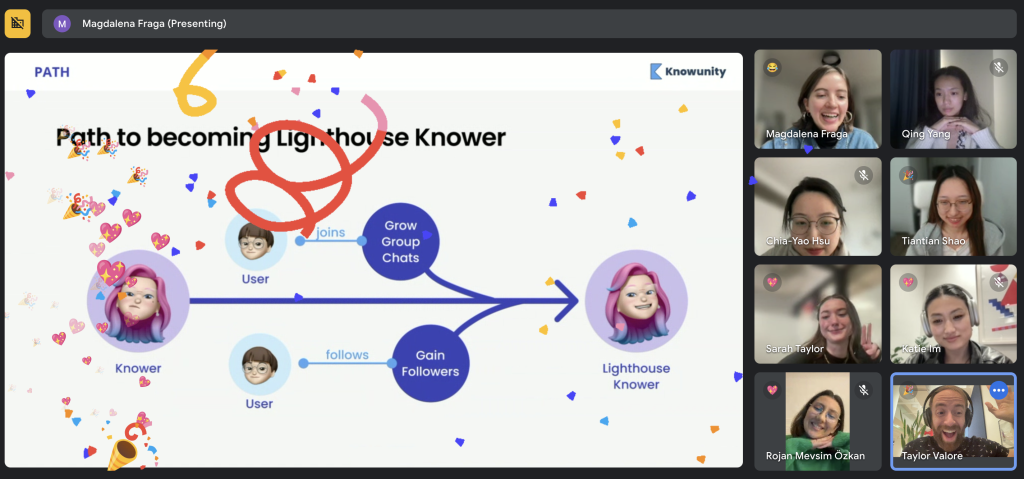
* MY LEARNINGS
This is SO fun and inspiring. I came out of this project better and wiser.
- Don’t assume every target metric is perfectly tested. It doesn’t hurt to ask.
- Competitor analysis can inspire strategy changes. Both direct and indirect competitors.
- Trust intuition and don’t just poop on innovative ideas. Even if the data behind certain ideas are not 100%, communicate it and see what happens.
*WHAT WOULD I DO DIFFERENTLY
- Ask for clarification on the key metrics of qualifying for lighthouse knowers – “ Why did you come up with these numbers? Are these metrics open to change and evolve? “
- Ask for the short & long-term plans for the lighthouse knower and community aspect of the platform, to get a bigger picture of the business context behind our project.
- Predict more questions that will be asked in the final presentation.
- Provide a list of remaining points of curiosity, which could turn into future projects.
- Since this is an area of passion, I wish I had more time to do competitor analysis on other social media/ learning platforms, giving more evidence-backed suggestions.
*MY NEXT STEPS
- Follow up on features that will be implemented in a few weeks (we heard there will be many! Yay)
- Take a data-driven approach. In January 2024, I would kindly request for AB test data to see how well our recommendations are performing.
- Organize the research data again & do more competitor analysis. Hopefully, it will inspire more recommendations.